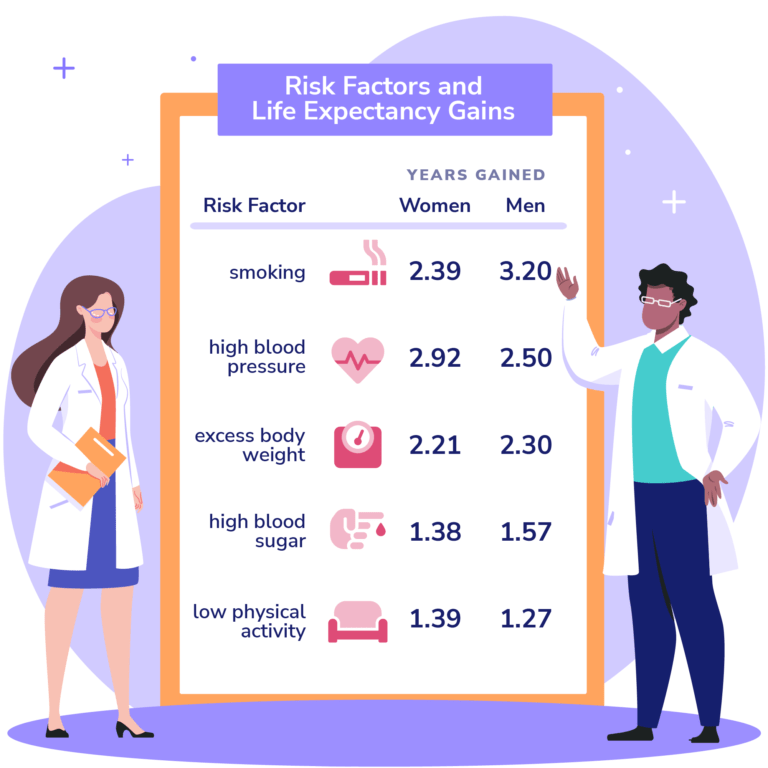TL;DR:
By removing certain risk factors in your life, you can statistically extend it. This article provides a brief overview of those factors and their impacts on longevity. The most important factors across demographics are: smoking cessation or avoidance, managing blood pressure, removal of excess body weight, reduction of blood sugar, and adequate exercise. Managing these risk factors well can extend life by approximately 9 years.
Acknowledgement
I want to thank Elliott Fisher for his time and work on this research and for pushing my own thinking around improving Medicare and population health.
Key Risk Factors
In their research on predictive models for modifiable risk factors of death as published in Population Health Metrics, Fisher, et al. studied data from more than 8,000 patients to isolate and determine key factors that might predict longevity. Their results (below) indicate that certain key factors can extend life expectancy and that joint effects of those factors can lead to differences of almost 9 years.
Results
Table 1: Life expectancy gains in the US population (in years) by removing risk factors
In more practical and population health terms, clinicians and patients might think about how they can improve performance around the following variables to extend life expectancy.
Key Risk Factors Defined
Table 2: List of risk factors with the corresponding exposure metric
Top Opportunities for Population Health Improvement
- Smoking — avoidance or smoking cessation is the strongest individual variable affecting human longevity, according to this study.
- High blood pressure — avoiding and managing high blood pressure conditions is the second most significant factor.
- Excess body weight — helping patients or focusing on proper body weight is the third most significant criterion. This can be a hard-to-measure concept; excess fat or BMI indices have often been used as proxies for this.
- High blood sugar — normal blood sugar levels (and avoidance of high blood sugar or diabetic conditions) is linked to more than 1 year of longevity.
- Physical activity — at least 2.5 hours per week of moderate physical activity or more than 1 hour per week of vigorous physical activity can substantially extend longevity. Beyond those amounts, there aren’t clear indications of gained longevity benefits.

About Pearl Health
Pearl Health is powering the future of healthcare. We help primary care providers and healthcare organizations deliver quality healthcare to the patients who need it most, when they need it most — and get rewarded for keeping patients healthy. Our technology, services, and financial tools enable better, more proactive care, decrease the cost of care across patient panels, and optimize performance in value-based care models for Traditional Medicare and Medicare Advantage. We are a team of physicians and public health experts, technologists, healthcare innovators, and experienced risk management professionals who believe that primary care providers are the key to addressing our healthcare system’s biggest challenges. Since its founding in 2020, Pearl has expanded to partner with thousands of primary care providers in practices and organizations across 44 states. Our investors include Andreessen Horowitz, Viking Global Investors, AlleyCorp, and Ulysses Management.
Learn more at www.pearlhealth.com.
Pearl Health
Madison Klein
Head of Marketing, Pearl Health
562-310-6219
[email protected]
Pearl Health
Madison Klein
Head of Marketing, Pearl Health
562-310-6219
[email protected]


